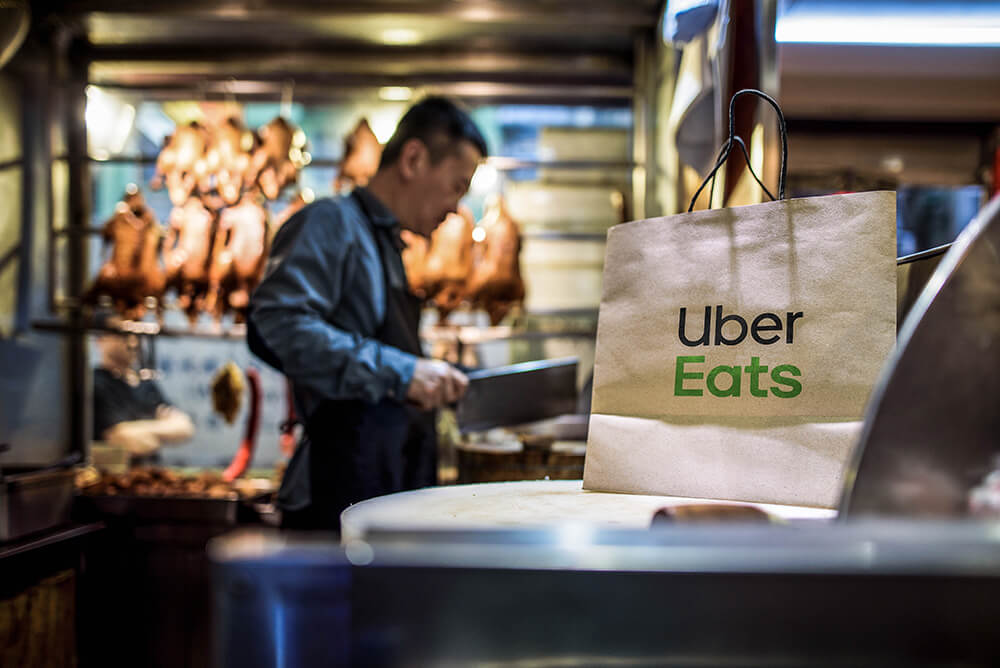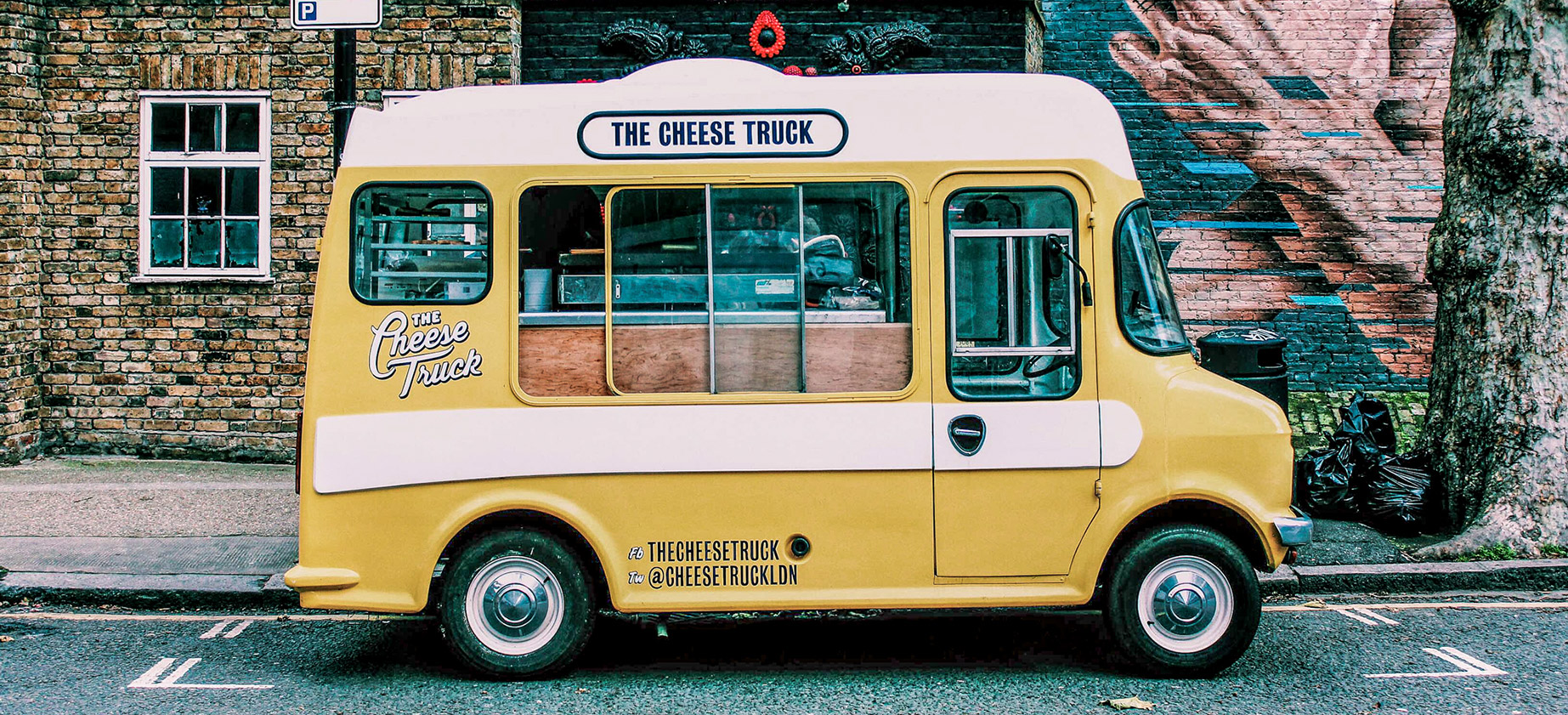Many countries have stepped up measures to prevent the spread of the virus, forcing a shutdown on leisure activities, such as museums, theaters, restaurants and cafes. Gatherings of more than two people have been banned in Germany and fines are being imposed In Paris, France, for anyone outside without good reason.
Not only are visitor numbers down, but restaurants are facing staff shortages as the infection spreads. In the UK, some fast food chains that would be allowed to continue with take-out and delivery orders are choosing to close down entirely to protect their workers – with both McDonald’s and Nandos closing their doors.
However, much of the industry is rallying to implement strategies that not only ensure restaurants stay in business but that people can enjoy their favorite dishes from the safety of their homes.
First implemented by restaurants and coffee shops in China during the initial outbreak, contactless deliveries have become the norm in cities across the globe. This has been made possible by the infrastructures already in place thanks to delivery services such as Just Eat and Deliveroo. The rise in ghost kitchens mean that a number of brands already have remote premises in which they can prepare and cook their signature dishes, catering to the increase in customer demand.
To help ease the burden for independent restaurants that use its services in the US, Grubhub has announced it will delay collecting up to $100m in fees, though will obviously continue to prioritize and pay its delivery staff.
The likes of Starbucks are making use of their existing drive-thru models, while Mexican chain Chipotle is hosting virtual hangouts for customers to help them cope with social distancing.
We speak to three restaurant owners about their experiences so far and what the future might hold.
Welcome to New York
The Empire State is a hub of activity, attracting more than 252 million visitors every year. But it now also has the most cases of Covid-19 s in the country. To help prevent the spread of the virus, Governor Cuomo ordered all nonessential businesses in the state to close and nonessential workers to stay home on March 22, further tightening earlier restrictions.
But for many restaurants, the knockout blow came earlier with the first round of closures.
“The critical moment was when Governor Cuomo shut down the theaters – that was like a guillotine. The knife came down and everything stopped,” says Jeremy Merrin, founder and CEO of Havana Central, a group of restaurants across New York. “We saw the writing on the wall and made the decision to close before the wider shutdown was announced, which allowed us to shut down more carefully.”
Of course, not every business had the foresight to prepare for the worst. “When we got hit hard in NYC, restaurants in the northern part of the state were still full – they felt like it was a non-event because it hadn’t hit them yet,” explains Merrin, who is also vice president of the New York State Restaurant Association. “When the decision was made to shut down the entire state, then everyone started to really worry.”
For many, the most distressing consequence was having to lay off staff, people who Merrin says can least afford to go without pay. Havana Central had to step down 400 people and The National Restaurant Association is forecasting 5 to 7 million people will lose their jobs across the sector.
“That’s before you think about the related services, like cleaning, laundry and even delivery services. The domino effect is going to be enormous,” Merrin adds. “The other problem is the undocumented workers, because the truth of the matter is there are a lot of them out there – they won’t be eligible for unemployment and have no means at all.”
Havana Central has started a GoFundMe page to support its staff and some of its vendors have generously donated perishable product that can’t be frozen to the team. “We’ve organized a pantry for our workers,” says Merrin. “But it’s not that much and it won’t be for that long.”
While Havana Central is yet to launch a take-away or delivery service, Merrin recognizes this trend will only continue to rise. But to open for delivery, even at a reduced menu and without wait staff, takes a certain amount of overhead, so businesses need to do their sums.
“Even with a skeleton crew you have to be making enough money to make it worthwhile. Certain areas are going to do better than others: Times Square restaurants that normally do the best will probably do the worst, and those that will do the best will be those in heavily populated residential neighborhoods where everyone is at home.”
The value of the third-party delivery services, like Uber Eats, Door Dash and GrubHub, will also come into play, he says. “While many restaurants have been very upset with the fees that these services have been charging – which I don’t disagree with – they now understand the necessity of having them in place. They will be very important players in keeping a lot of these restaurants alive during this period.”

Image: Uber
His biggest concern from a business standpoint is having enough cash at the end of the crisis to reopen. “That should be every small business concern at this point. If you can’t reopen, you can’t rehire your people and you’re out of business.”
Somewhere in Sydney
Having only just emerged from the worst spate of bushfires in recent history – during which the restaurant industry played a huge part in supporting firefighters and local communities – Australia also announced a nationwide shutdown on March 22.
This saw the closure of restaurants and cafes to the public and restricted them to delivery and takeaway options. While this presents its own set of challenges for businesses who do not already have these services in place, the impact is even more devastating for foodservice operations in clubs, hotels and pubs, which have been shut down entirely.
One such business that has been affected is Catering HQ, which operates dining and function spaces in five sports and country clubs across Sydney. “I feel like I’m living a nightmare, it’s so surreal,” says Steve Sidd, managing director of Catering HQ.
When the virus first came into play, the company was able to take simple steps such as introducing hand sanitizer pumps and removing crockery and cutlery from the tables. But this quickly escalated as the virus gathered pace, and the government enforced stricter and stricter regulations. Dining areas that had previously been able to seat up to 460 people were left empty.
“Every day something changed,” says Sidd. “Obviously, the impact on revenue was horrific. Our day-to-day trade had a huge drop and functions across our 22 event spaces were non-existent.” While the company postponed events where it could, many were canceled and it chose to honor full refunds.
Catering HQ also had to reduce its labor significantly and ended up letting go 90 of its 230 employees. “From a typical night where we would have 12 chefs in the kitchen, 11 floor staff, plus kitchen hands and kitchen porters, we had to reduce the roster down to two chefs and two front-of-house staff. That’s how much of an impact it had.”
Nevertheless, Sidd is trying to remain positive and see this temporary furlough as a chance to take stock and improve for the future. “We’re trying to see it as an opportunity to regroup and recreate ourselves, to look at our processes, strategies, marketing and menus, and come up with some fresh ideas. We want to ride through it so we can come back stronger with a bigger impact.”
London calling
Having just finalized its departure from the EU, the UK once again finds itself in the same boat as its European counterparts, following a similar trajectory as Italy in terms of Covid-19 cases. Despite the common adage of ‘Keep calm and carry on’, the country also went into shutdown on March 22 in a bid to flatten the curve.
The impact on London’s food scene was immediate – the iconic hotel and Michelin starred The Ritz was forced to close its doors for the first time since it opened in 1906. And it’s a common story.
“We’ve had to close both our restaurants and put the opening of our third, which we’d literally just announced, on hold. So, it’s been pretty devastating,” explains Tayler Carver, co-founder of The Cheese Bar.
“The worst thing was having to tell our amazing teams that we had no work for them and were unsure how we were going to be able to support them for however long this thing lasts,” she says.
Having started out as a humble food truck before expanding into permanent premises, the company was well placed to pivot back to something more akin to its original model.
“We spent the whole of last week trying to set up various different delivery options, but the landscape was changing so rapidly that it was hard to keep up,” Carver admits. “Originally, we thought we could take our food trucks to different parts of London and customers could collect Self Isolation Survival Kits (British cheese, charcuterie and wine) but obviously now we’re having to go directly to people’s houses for contactless deliveries.”
The company has also taken the opportunity to launch a new macaroni menu – Mac Daddy – designed especially with delivery in mind. “With everyone and their dog now jumping on the delivery wagon, we felt it was important to come up with something new and unique to keep people interested and help our customers survive the lockdown.”
Through these services and the company’s presence on social media, The Cheese Bar is managing to connect with customers in a new way, says Carver. “It’s so heart-warming to know that we’re keeping people feeling happy through such a difficult time. Hopefully it will be enough to keep us going for the next few weeks and ensure we still have restaurants for our teams to come back to once this is all over.”
One thing the current situation has given the team is a new-found appreciation for delivery companies and drivers: “It’s a tough job! We also have probably the worst ordering system in the world, as we’re just using the existing functionality on our website, which is absolutely not fit for purpose. But we’re managing!”
Hope for the future
While the current uncertainty presents endless challenges to businesses across the industry, the saving grace is simple: people need to eat and they enjoy doing so together. Those able to ride out the storm will be in a good position to recover.
For smaller operations without the cash reserves or resources of larger companies, this may indeed be a struggle. Various governments are setting up measures to support these businesses, with loans and relief packages available, and many landlords are offering rental relief during this period.
As for larger organizations, Sidd says it’s all about staff retention, so they can hit the ground running when they reopen. “When this is all cleared, I am very confident that we will revert to normality – people are going to want to get out of their homes. We’ve got to work on our strategies now so that we’re ready to help people celebrate and enjoy what they used do.”
Merrin agrees, saying it’s one industry he’s not worried will disappear through any social or technological change. “The need to socialize is so strong, it’s amazing,” he says. “People may dine out differently, but my gut feeling is that the minute they say it’s safe to go out, restaurants are going to be full. Dining is one of the fundamental ways that we relate to each other.”
















